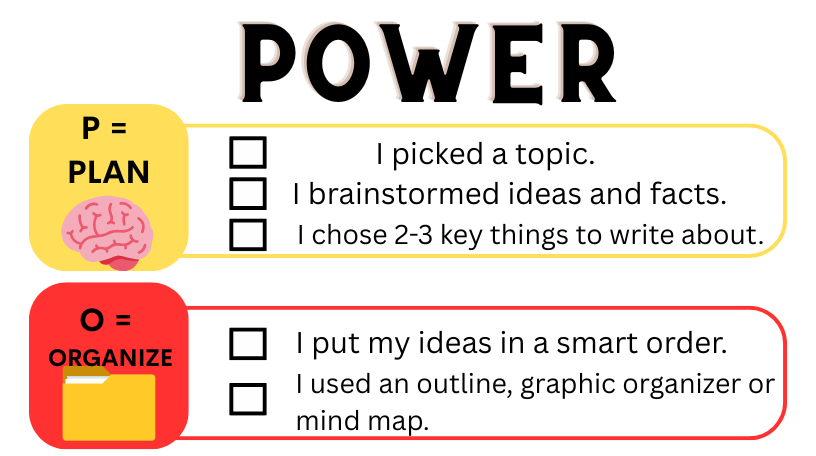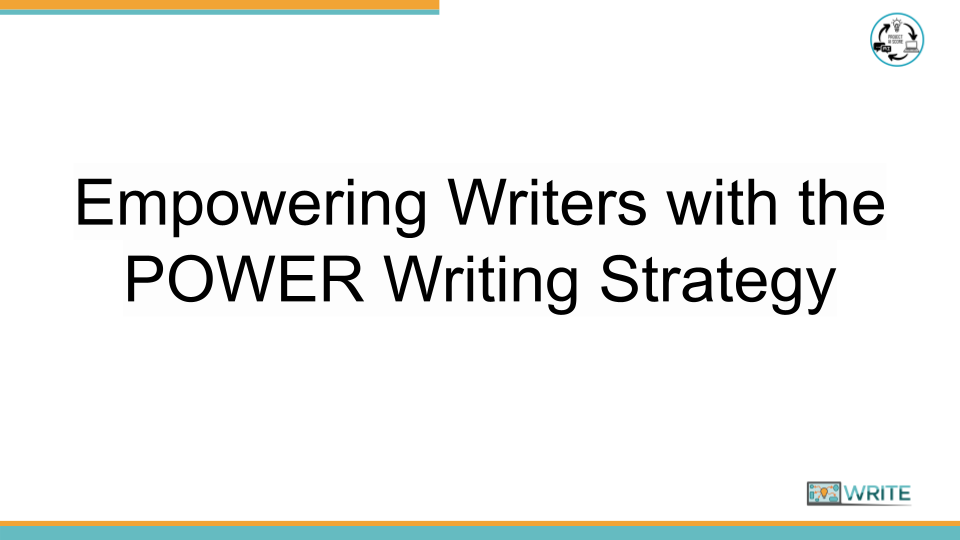Plan, Organize, Write, Edit, and Revise (POWER) Strategy
Strategy Parameters
-
Genre: Persuasive, narrative, informational.
-
Grade Level: 6–12.
-
Writing Process: Planning, organization, drafting, editing, revising.
At-A-Glance
The POWER strategy breaks the entire writing process into five structured, manageable steps: Plan, Organize, Write, Edit, and Revise. The strategy supports executive functioning skills and is especially useful for building independence and confidence in students, including those with learning differences.
Learn More
Best Practices
-
Teach each step explicitly with visuals and sentence starters to provide clear scaffolding.
-
Use visual brainstorming tools and graphic organizers to effectively support the planning and organization phases.
-
Model transitions and paragraph structure using color coding and clear examples to demonstrate coherence.
-
Promote confident drafting using sentence frames and assistive technology to reduce cognitive load and early error penalization.
-
Teach revision moves (Add, Remove, Move, Substitute) using visual menus and examples to ensure students make meaningful changes.
Common Pitfalls
-
Don’t skip steps or assume students can apply the strategy without direct instruction and guided practice.
-
Don’t confuse revision with editing; clarify that revision involves meaningful changes to content (ARMS), while editing fixes surface-level errors (COPS/CUPS).
-
Don’t interrupt the drafting phase with corrections or penalize early errors; encourage fluency first.
-
Don’t rely only on red pen feedback or mark every mistake; use color-coded checklists and peer editing for guided self-editing.
-
Don’t limit revision to one round or skip student reflection on the changes they made.
Implementation Tips
-
Plan and Organize: Teach the Plan step using visual webs and sentence starters to help students generate their initial ideas. Follow this by guiding them through the Organize phase with graphic organizers that help break their ideas into clear, sequential sections.
-
Write and Draft: When students begin to Write, encourage fluency and use sentence frames or structural templates to support their initial drafting. Use the Write step to promote confidence by connecting the task to familiar, low-stakes activities like planning a trip.
-
Edit and Revise: Introduce the Edit phase with a dedicated tool like the COPS checklist and model the process using shared samples, focusing on surface-level correctness. For the final Revise phase, teach ARMS moves one at a time and use visual menus to help students make meaningful content changes.





